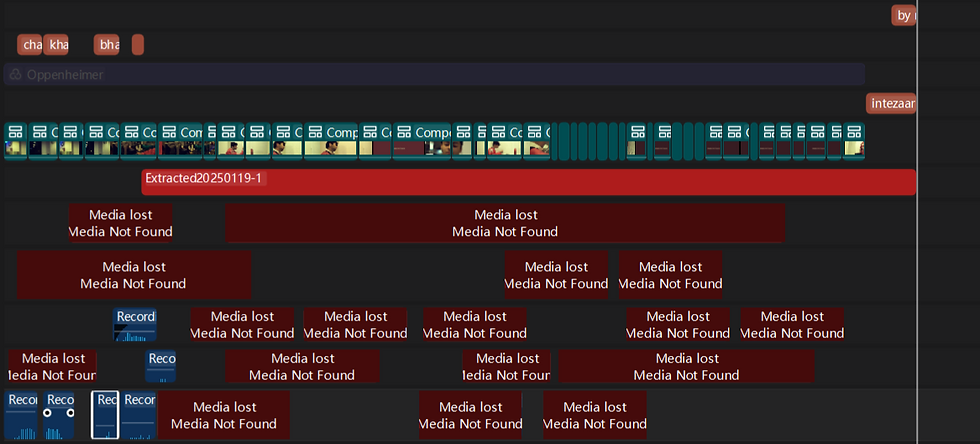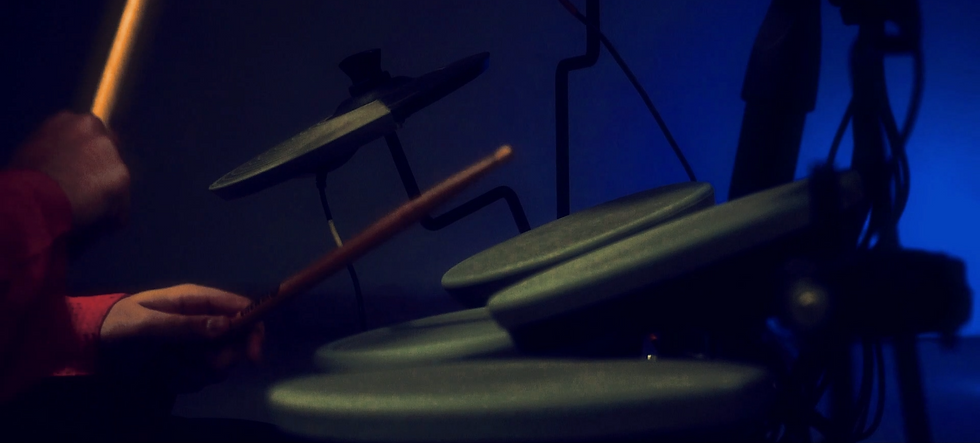the production of the task.
- zainfaridr
- Jan 26
- 3 min read
The phase of audiovisual production that comes after recording or filming is called post-production. In order to produce a polished final product for distribution, raw material must be refined and enhanced through editing, color correction, sound design, visual effects, and other procedures.
One main software was used for the editing: Capcut as I was short on time. There were some struggles, with my laptop running out of storage resulting in my first draft getting corrupted and crashing to my video not saving and me closing the software with confidence.

The production of Intezaar spanned two intense days, each dedicated to a different location and set of scenes. Day 1 was reserved for filming the drums scene, while Day 2 focused on capturing the café setting. Despite the tight schedule and challenges, the process proved to be an unforgettable learning experience.
Day 1: The Drum Scene

The first day of filming was entirely dedicated to the electric drum scene. The location was carefully selected to allow for a dark, low-key lighting environment that contrasted with the bright warmth of the café shots. Setting up this scene required precise lighting, including RGB lights, to achieve the desired visual aesthetic. I used a Sony A73 with a stock 40-70mm lens mounted on a tripod, which provided flexibility for both wide and close-up shots.
A significant challenge was getting the electric drum set to function properly, which delayed the setup. Additionally, the equipment was heavy—over 100 kg spread across multiple bags containing lights, extensions, chargers, batteries, and more. Carrying all this gear left me with sore traps and shoulders, but I had no choice but to keep going.
To capture the sequence, I had the actor repeat the drum performance several times from multiple angles, as I only had one camera. Each shot was carefully planned to ensure seamless match cuts in post-production. By the end of the day, I had achieved a variety of close-ups, medium shots, and silhouette frames that beautifully showcased the intensity of the drum solo.
Day 2: The Café Scene

The second day brought its own set of challenges, including shooting in a public café. Setting up the props and building the set required quick thinking and adaptability. Some last-minute changes were made to accommodate the environment, ensuring that the framing matched the envisioned aesthetic.
Continuity was a priority, so I took screenshots of each shot to ensure precise replication across scenes. This method helped maintain consistency despite the actor's unexpected disappearance with his friends for part of the shoot. I had to guilt-trip him into returning, which added to the time pressure.


To save time, I worked at an accelerated pace, which unfortunately resulted in some minor focus issues. Despite this, I managed to capture a variety of symmetrical establishing shots, close-ups, and reaction shots that conveyed the character’s emotions and the story’s progression.
Reflection on Production:
Though physically exhausting and fraught with obstacles, the production phase was an incredible exercise in creativity and problem-solving. Working solo on such an intricate project taught me the value of adaptability, precision, perseverance and most importantly planning before hand. Looking back, the experience not only tested my technical skills but also reinforced my passion for filmmaking.
proof of production
BTS
As I made the task in an extreme hurry, these are all the photos my friends captured of the process, the first one has me at location 2 where the drum scene took place, the second picture has me carrying the large amounts of equipment, and the last one is where the majority of the film took place, a cafe.









Comments